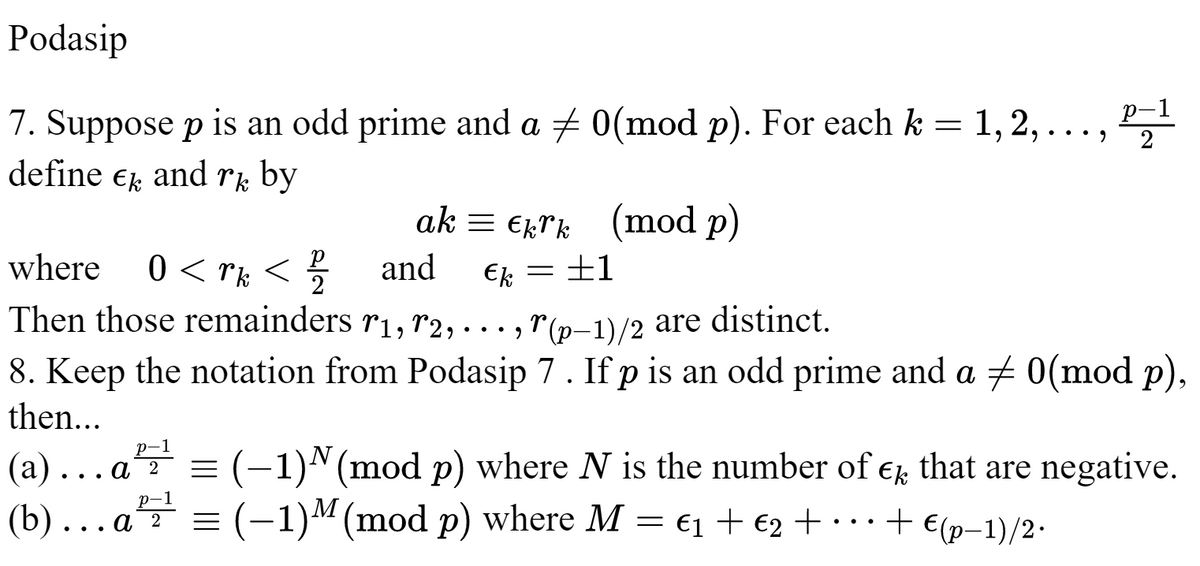8. Keep the notation from Podasip 7. If p is an odd prime and a ‡ 0(mod p), then... p-1 (a)…a²¹ = (−1)ª(mod p) where N is the number of € that are negative. + €(p-1)/2· p-1 (b)...a²2 = (−1)M (mod p) where M = €1 + €2 + 2
8. Keep the notation from Podasip 7. If p is an odd prime and a ‡ 0(mod p), then... p-1 (a)…a²¹ = (−1)ª(mod p) where N is the number of € that are negative. + €(p-1)/2· p-1 (b)...a²2 = (−1)M (mod p) where M = €1 + €2 + 2
Chapter8: Sequences, Series,and Probability
Section8.4: Mathematical Induction
Problem 4ECP
Related questions
Question
JUST anwser 8 !!!

Transcribed Image Text:Podasip
p-1
7. Suppose p is an odd prime and a ‡ 0(mod p). For each k = 1, 2,…, pz¹
define Ek and rk by
2
ak Ekrk (mod p)
where 0<rk </ and Ek
2
+1
Then those remainders r1, 72, ..., (p-1)/2 are distinct.
r
8. Keep the notation from Podasip 7. If p is an odd prime and a ‡ 0(mod p),
then...
p-1
(a).. α 2 = (−1)ª (mod p) where N is the number of € that are negative.
(b)... a² = (-1) M (mod p) where M = €₁ + €2 + · ·· + €(p−1)/2.
p-1
=
Expert Solution
This question has been solved!
Explore an expertly crafted, step-by-step solution for a thorough understanding of key concepts.
Step by step
Solved in 4 steps with 5 images

Recommended textbooks for you


Elements Of Modern Algebra
Algebra
ISBN:
9781285463230
Author:
Gilbert, Linda, Jimmie
Publisher:
Cengage Learning,


Elements Of Modern Algebra
Algebra
ISBN:
9781285463230
Author:
Gilbert, Linda, Jimmie
Publisher:
Cengage Learning,